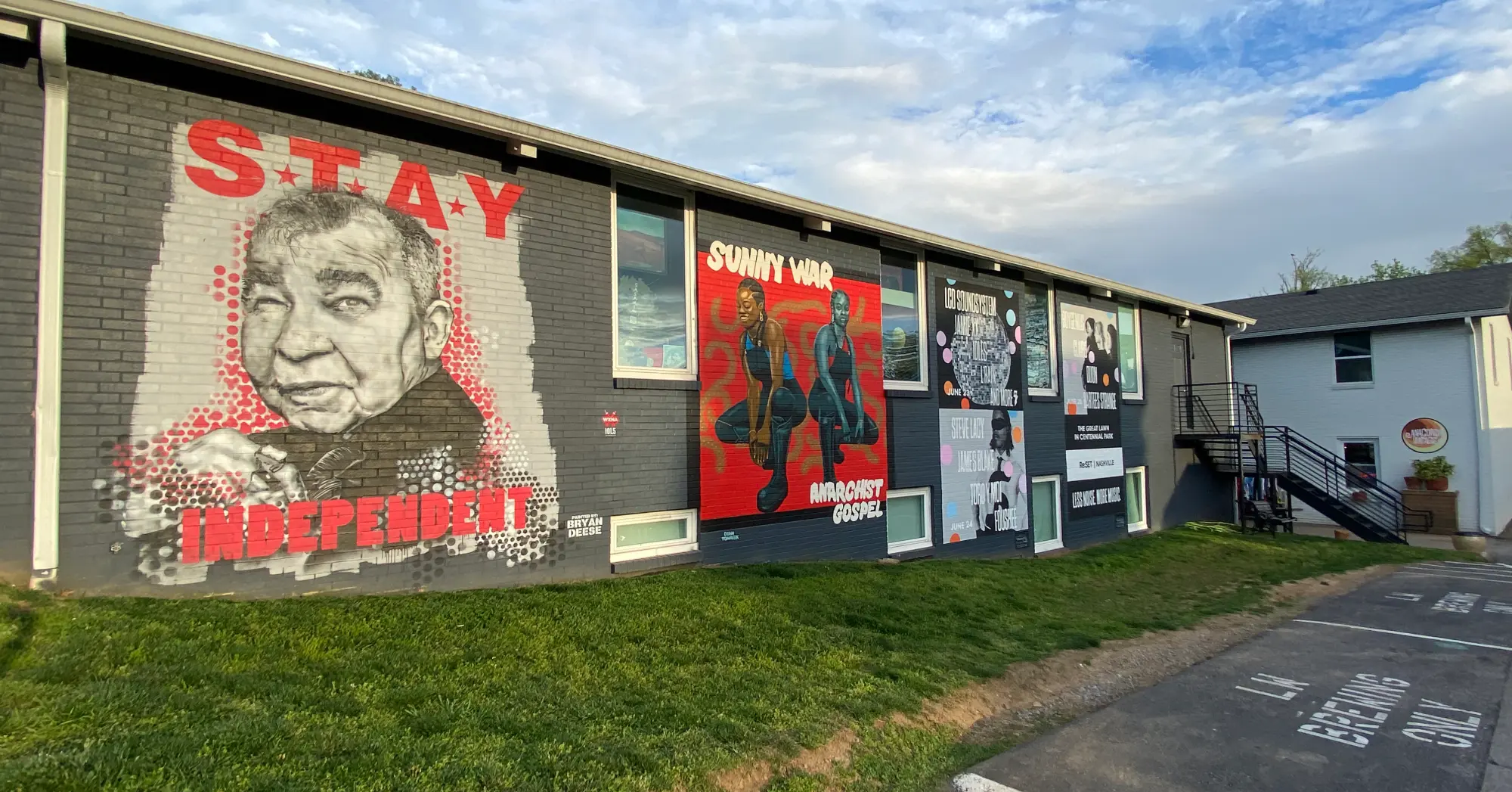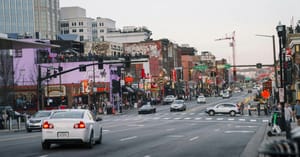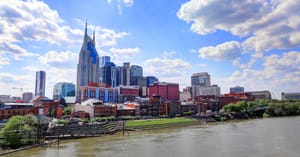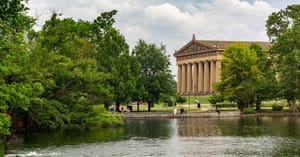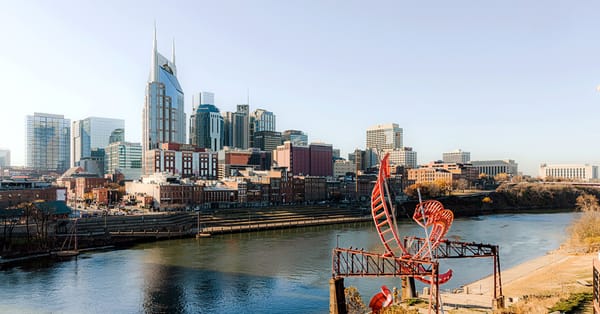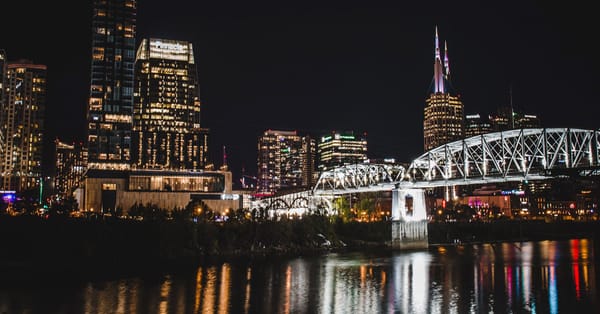One aspect of Nashville that seems to surprise both tourists and transplants traveling here for the first time is that no two Nashville neighborhoods are quite the same. After spending some time in East Nashville on my last visit, this observation couldn’t be closer to the truth.
Tucked away on the other side of the Cumberland River just a mere three or four miles from the chaos and hedonism of downtown, the community of East Nashville offered a much more manageable vacation.
Compared to other areas of the city, East Nashville succeeded in providing something truly remarkable: an authentic Nashville experience far from being overwhelming — without being underwhelming.
East Nashville’s Vibrant History
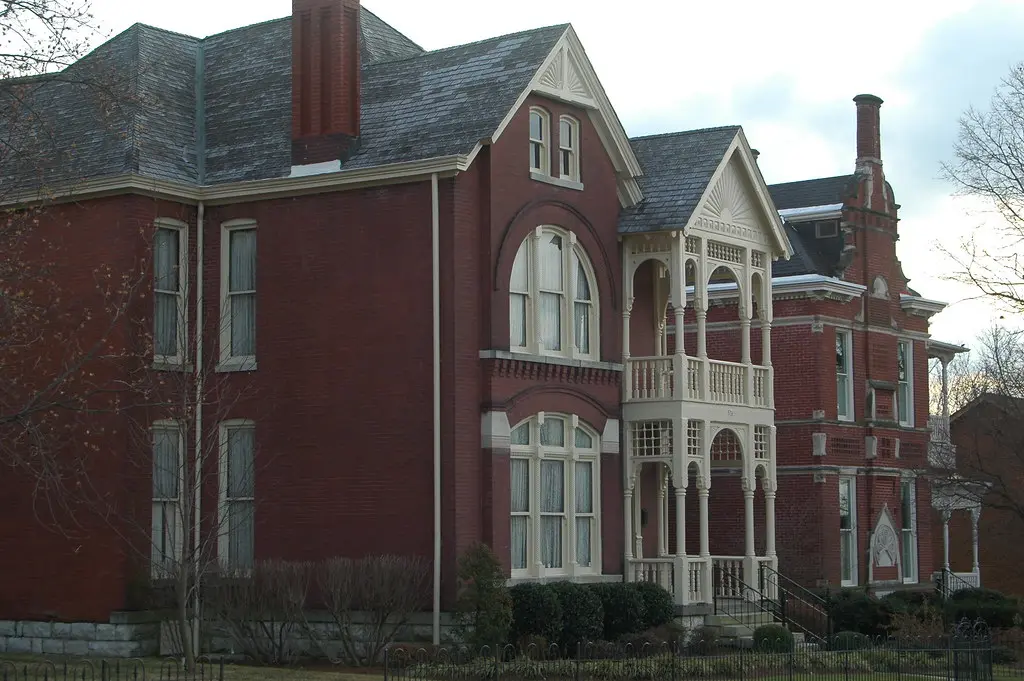
To understand how East Nashville developed its unique charm, it’s helpful to study its past.
What we understand to be the area of East Nashville is actually a conflux of 11 tiny neighborhoods – Cleveland Park, East End, East Hill, Eastwood, Five Points, Edgefield, Inglewood, Lockeland Springs, McFerrin Park, Rolling Acres, and West Greenwood.
The first Neighborhood to be developed was Edgefield in the early 19th century, followed by East End. As downtown Nashville grew rapidly during this time, many of the affluent families of Nashville began building their homes on the east bank of the Cumberland River including Percy Warner, Neil S. Brown, and even outlaw Jesse James under the pseudonym Thomas Howard.
Though surprisingly modest, these types of homes would become some of the most ornate and unique types of residences in the Nashville area, and would eventually contribute to East Nashville’s distinct appeal.
Unlike the aristocracy of today, Nashville’s former upper crust also invested heavily in community projects, including Shelby Bottoms Park, which drew hoards of crowds for many decades to see live music and performances.
There was even an airport (featured in this article) that flew in many famous musicians to Nashville over the years.
Beginning in the early 20th century, a series of natural disasters took its toll on the vibrance of East Nashville, and many of its wealthy residents moved to the southern parts of town.
These events include the Great East Nashville Fire of 1916 which left over 600 homes and businesses destroyed and 2,500 people homeless. The rebuilding effort was slow and many of the lots that held historic buildings lost to fire would remain empty for several decades.
Throughout the late 50s into the late 70s, several revitalization efforts took place, with mixed results, but all in all, the affluence of the early 1900s never returned to East Nashville.
However, the failure of the city to adequately restore the glory of East Nashville’s early days did have one positive effect — a massive residential area with affordable and historic homes. This led to many struggling artists and diverse populations to move into East Nashville, contributing to the distinct warmth and style it carries on today.
Day To Day Life In East Nashville
Driving through East Nashville from downtown, the most immediate difference you’ll likely notice is how residential it is once you cross the river.
But don’t let these charming historic Victorian-style homes and families on their way to church fool you into thinking that East Nashville is a placid and uneventful area of town. One of the greatest benefits of living in and visiting East Nashville is its diversity in both residents and events.
Getting around
One of the most beneficial aspects that East Nashville has to offer tourists and new residents alike is its walkability.
If you’re traveling to Nashville without a car, pretty much everything you need is within walking distance, including grocery stores, convenience stores, bars, restaurants, and a series of beautiful parks.
As an East Nashville resident remarked on my last visit, “I never leave East Nashville. I think I’ve been downtown once or twice since I moved here two years ago”.
If you’re trying to access specific sites, there may be a little more of a challenge in terms of transportation, but nothing major.
Access to downtown to see some of the more popular tourist sites such as The Country Music Hall of Fame or Johnny Cash Museum is easy through the 56 bus which costs $2.00, generally runs every 20-30 minutes, and gets you to the center of town in less than five minutes.
If you’re less adventurous, hail a Lyft or Uber, but if you’re going to do so, I’d suggest spending an entire day downtown and seeing every site in one go. The reason for this is that you want to minimize costs back and forth from downtown as they can vary in price drastically depending on when you go.
If you’ve brought your car with you, you’re in luck — parking in East Nashville is a dream. However, if you plan on leaving East Nashville, consider leaving your car at the hotel as finding a parking space anywhere else is hell.
Shops
I’ll start by saying that there are better areas in terms of shopping in Nashville, particularly Germantown or Hillsboro, but you can find plenty of great antique stores, boutiques, and gift shops throughout East Nashville.
If you’re trying to make a day of it, head to Fatherland Street and Woodland Street. Both have a great selection of unique shopping experiences and both streets are located just a few blocks from each other.
If you’re into records, the best record shop in the whole city is located in East Nashville – Grimey’s New and Preloved Music.
They have a massive selection and have regular performances from huge names. I randomly walked in with a friend and ended up seeing Taj Mahal play a few songs. Just one of the many things I love about this city.
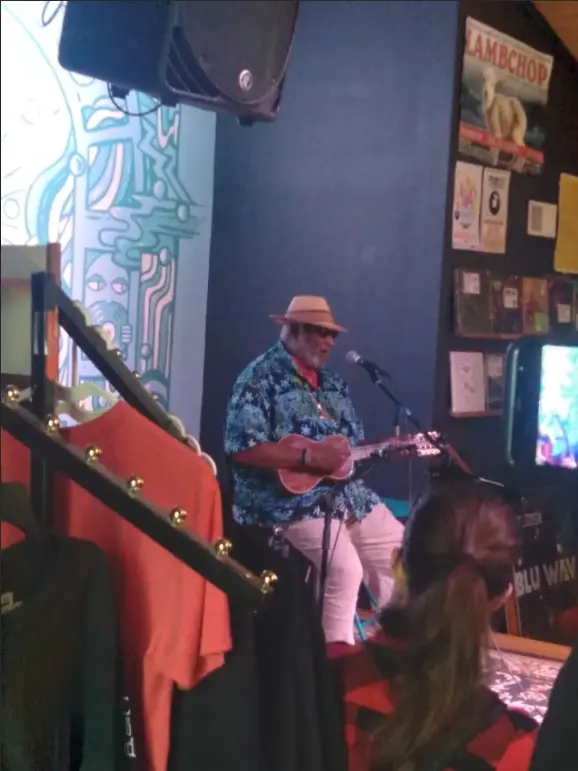
Nightlife
For a primarily residential area, East Nashville’s nightlife packs quite a punch, and in many ways, East Nashville’s nightlife is much more enjoyable because it’s a residential area.
The bars, restaurants, and music venues here are spread out from each other considerably in a sea of historic homes and parks, making it perfect for crowd control.
If you’ve been to downtown Nashville, you know that the crowding in this city is next level. Places like Tootsie’s or Robert’s Western World are impossible to even access on a Friday or Saturday night because there’s literally no room to stand.
This particular problem is rare in East Nashville, and there are many fantastic places to fulfill your itch for quality music, cold drinks, and ample socialization without having your favorite pair of cowboy boots stepped on. My personal favorites are The 5 Spot, Jane’s Hideaway, and Attaboy.
Food
The same benefit of crowding applies to restaurants too. While you’ll likely be waiting over an hour for a table at a restaurant located in downtown, the busiest restaurants in East Nashville typically never reach hour-long waits.
If you’re in the market for a legendary sandwich, you’re going to be facing a unique challenge of your own, however – there are far too many to choose from in East Nashville. Take your pick of Bill’s Sandwich Palace, Tower Market Deli, and FatBelly, you won’t be disappointed.
For burgers, your decision is a little easier — go with Dino’s.
This unassuming beer and burger joint is perfect for the end of a night on the town as it’s open late, is super affordable, and is deliciously satisfying. They also have a jukebox and a patio.
If you’re looking for something upscale, check out Margot Cafe for French and Italian food or The Treehouse. If you want a fancy dining experience for mid-level prices, check out Lockeland Table for a happy medium.
Lodging
I was lucky enough to stay in my friend’s guest room when visiting East Nashville, but if you don’t have any friends (yet) in East Nashville, there are a few options to choose from.
Airbnb, much to the dismay of local residents, is rampant in East Nashville.
While this can provide a convenient and affordable lodging option, there are often even more affordable accommodations from local hotel chains, depending on how far in advance you book.
The Gallatin Hotel on average offers single rooms for less than $150 dollars a night and is located in the center of East Nashville. If you’re willing to invest a little extra, you can find luxury lodging at The Russell or Waymore’s Guest House
If you’re looking to relocate to Nashville permanently, you can expect slightly below-average prices for apartments compared to the rest of the city (slightly above average compared to the rest of the country). The same is typically true for real estate.
You’ll need to consider some important points though.
East Nashville’s historic charm is double-sided — if you want to buy a house here, you’ll need to be prepared to make numerous costly updates to your new home. Many of East Nashville’s houses have existed for over a hundred years.
During the city’s revitalization efforts in the 60s and 70s, whole blocks were demolished simply because it was cheaper to do so.
In fact, during this period, 167 homes were demolished (out of 600). This practice has continued to the present day, and much to the dismay of East Nashvillians, old homes are constantly being destroyed to erect these eyesores:
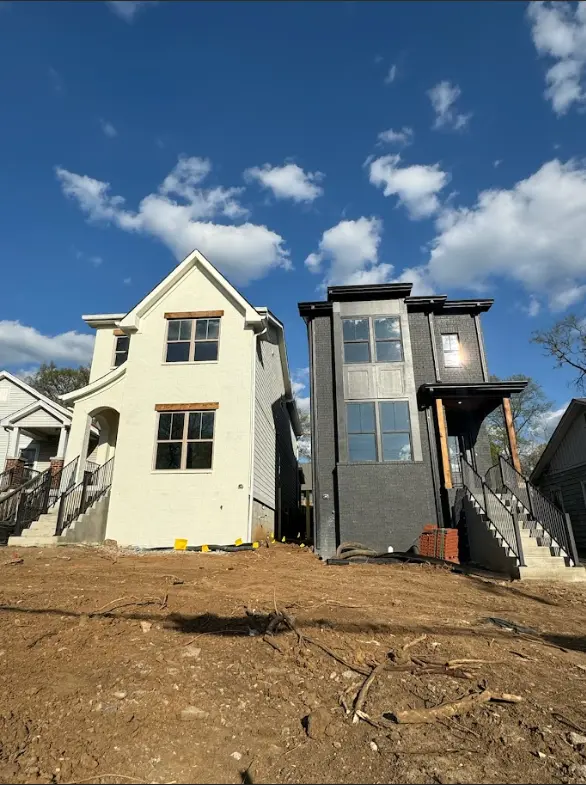
This brings me to one of my final points.
Settling down in East Nashville comes with another important commitment — being respectful of your neighbors.
East Nashville is full of friendly and warm people, but it’s important to consider the many transformations that its residents have gone through including gentrification, segregation, and natural disasters.
Even recently, many residents of East Nashville have been forcibly removed from their homes by the city due to their homes needing costly repairs, financial hardship, or natural disaster — and being “pushed out” is a constant source of trauma that many residents carry with them.
The growth in population that Nashville has experienced in the last several years is a positive thing in many respects, but for residents who have lived here a long time, it can be a sore subject.
The bottom line is to be mindful of your position as a transplant, and always seek out ways you can contribute to your community in a positive way as opposed to seeking ways to change or disrupt its contagious and distinct appeal.
The Perfect Destination For Many
As I’ve touched on many times throughout this piece, the benefits of visiting or relocating to East Nashville are numerous.
All of the things that make Nashville great (amazing food, friendly people, and a never-ending music scene) are on full display in East Nashville, but without all the things that make Nashville hard to deal with (crowds, drunk tourists, noise, and air pollution).
But before you write off the rest of the city, just remember — your mileage may vary. Nashville has something for everyone, and depending on your particular idea of a perfect vacation, East Nashville might not have everything you’re looking for.
Consider the specific types of experiences that you want to have.
If that involves visiting the iconic music industry sights such as The Grand Ole Opry, Ryman Auditorium, or RCA Records, or getting blackout drunk in a sea of middle-aged tourists, fraternity members, and bachelorette parties (which hey, no judgment on my end) East Nashville might be too tame for you.
But for those looking for genuine fun without sacrificing their eardrums, consider East Nashville on your next trip.


